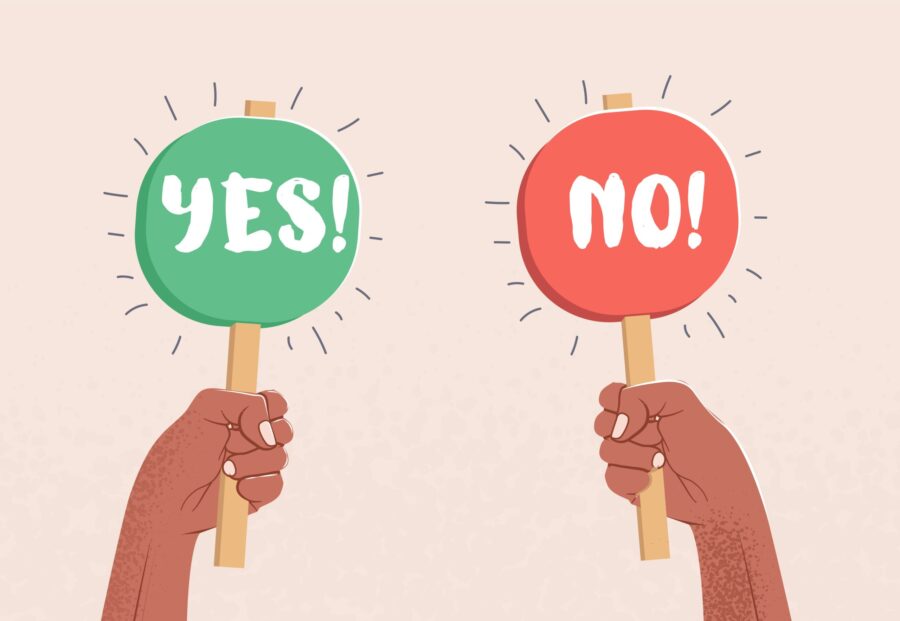“No” is a Complete Sentence
Society often sees politeness as agreement. But, the simple word “no” can be one of our most powerful tools. It helps us maintain our boundaries and protect our well-being. But, many of us hesitate to use it. We often feel compelled to soften it with explanations or apologies. Understanding that “no” is a complete sentence is not just about being assertive. It’s about embracing a key part of healthy communication and self-respect.
The Power of “No”
The word “no” is direct and unambiguous. It communicates a clear boundary without leaving room for misinterpretation. Despite its simplicity, many people find it difficult to say. The difficulty often stems from a fear of disappointing others. It is about appearing rude or causing conflict. Saying “yes” when you want to say “no” results in exhaustion. It also leads to resentment and a loss of personal integrity.
Saying “no” can be liberating. It lets us focus on our own needs and duties. This makes space for what truly matters to us. It shows self-awareness and self-respect. It signals to us and others that our time and energy are valuable.
The Cost of Not Saying “No”
Failing to say “no” can have significant consequences. When we overcommit ourselves, we often end up stretched too thin. This leads to stress and lower productivity. Our relationships can suffer too. We may begin to resent those who use our inability to refuse.
Giving in to others habitually wears down our self-respect over time. We may start to feel that our needs and desires are less important than others’. This can harm our mental health and well-being. By not asserting our boundaries, we also set a precedent. Others might come to expect our compliance. This makes it even harder to say “no” in the future.
Embracing “No” as a Complete Sentence
Recognizing that “no” is a complete sentence is a powerful mindset shift. It means that we do not owe anyone an explanation for our refusal. Some contexts call for a brief explanation. Doing so is polite. But, it’s crucial to know that it’s not required. Our reasons for saying “no” are valid, regardless of whether we choose to share them.
This mindset can be especially empowering at work. There, the pressure to say “yes” can be intense. By asserting our boundaries with a simple “no,” we’ve demonstrated confidence and clarity. It shows that we are in control of our workload and that we respect our own limits.
Practical Tips for Saying “No”
-
Be Direct and Clear: Avoid ambiguity. A simple “no” is often better. It is more respectful and easier to understand than a hesitant or vague response.
-
Practice: Like any skill, saying “no” becomes easier with practice. Start with small, low-stakes situations to build your confidence.
-
Use Assertive Body Language: Maintain eye contact and a calm tone of voice. Your body language should reinforce your words, conveying confidence and resolve.
-
Don’t apologize too much. It’s fine to be polite. But, saying sorry too often can weaken your message. A simple “I’m not able to” or “That won’t work for me” is enough.
-
Offer alternatives when you can’t comply. It can be a good compromise. For example, “I can’t help with that, but I can suggest someone else who might be able to.”
-
Prioritize Your Commitments. Keep your priorities in mind when deciding whether to say “yes” or “no.” If a request conflicts with them, it’s okay to decline.
-
Be Firm but Polite: It’s possible to be both firm and kind. “No, thank you” or “I appreciate you thinking of me, but I can’t” are polite yet assertive responses.
Conclusion
Understanding that “no” is a full sentence is key. It helps us keep healthy boundaries and protect our time, energy, and well-being. It lets us be genuine in our interactions. It stops us from overcommitting and burning out. By embracing the power of “no,” we respect ourselves and others. It fosters relationships built on honesty and mutual respect. In the end, saying “no” can be one of the most liberating and self-affirming actions we can take.

